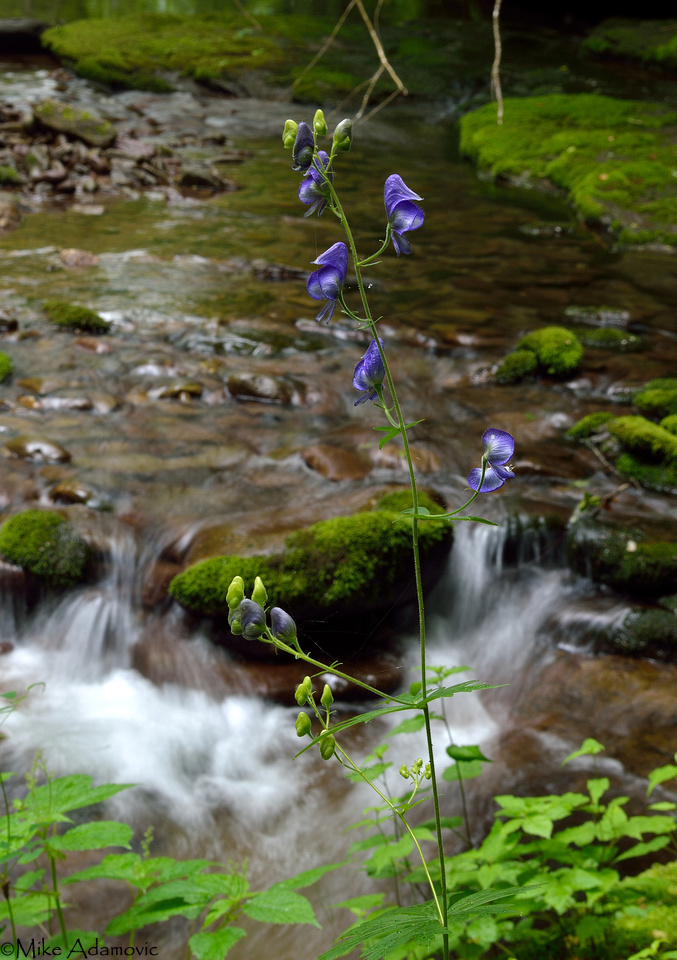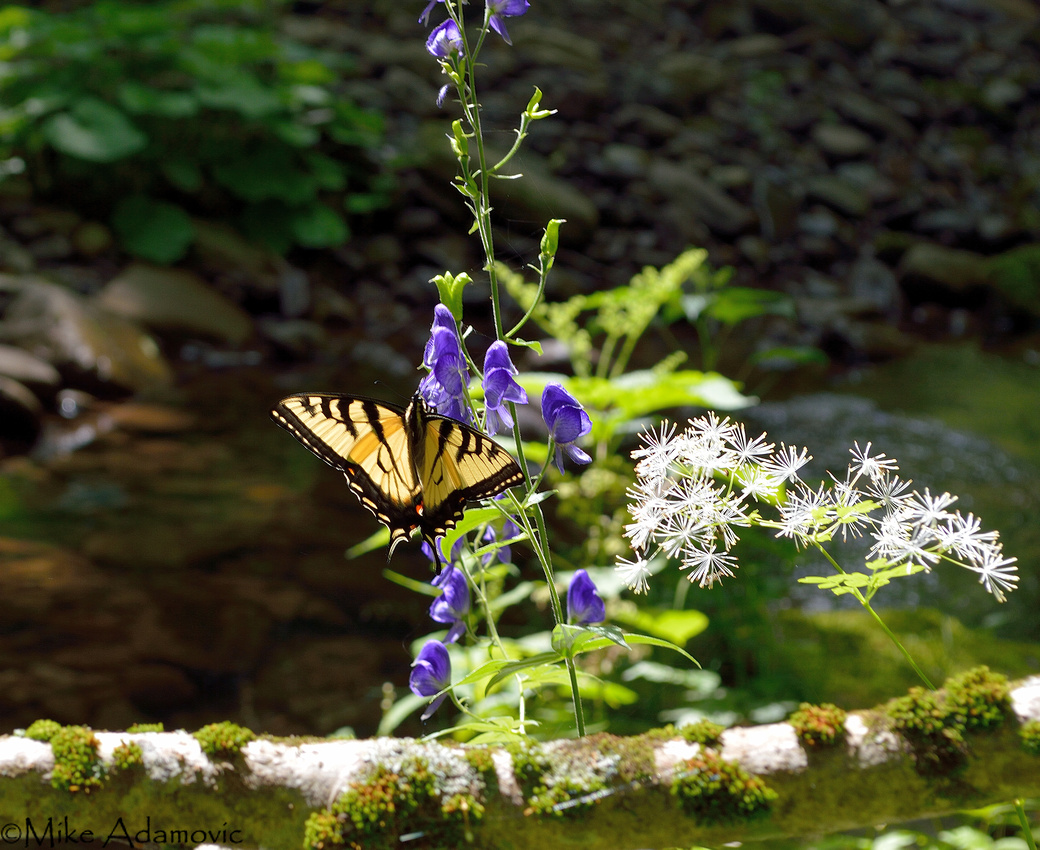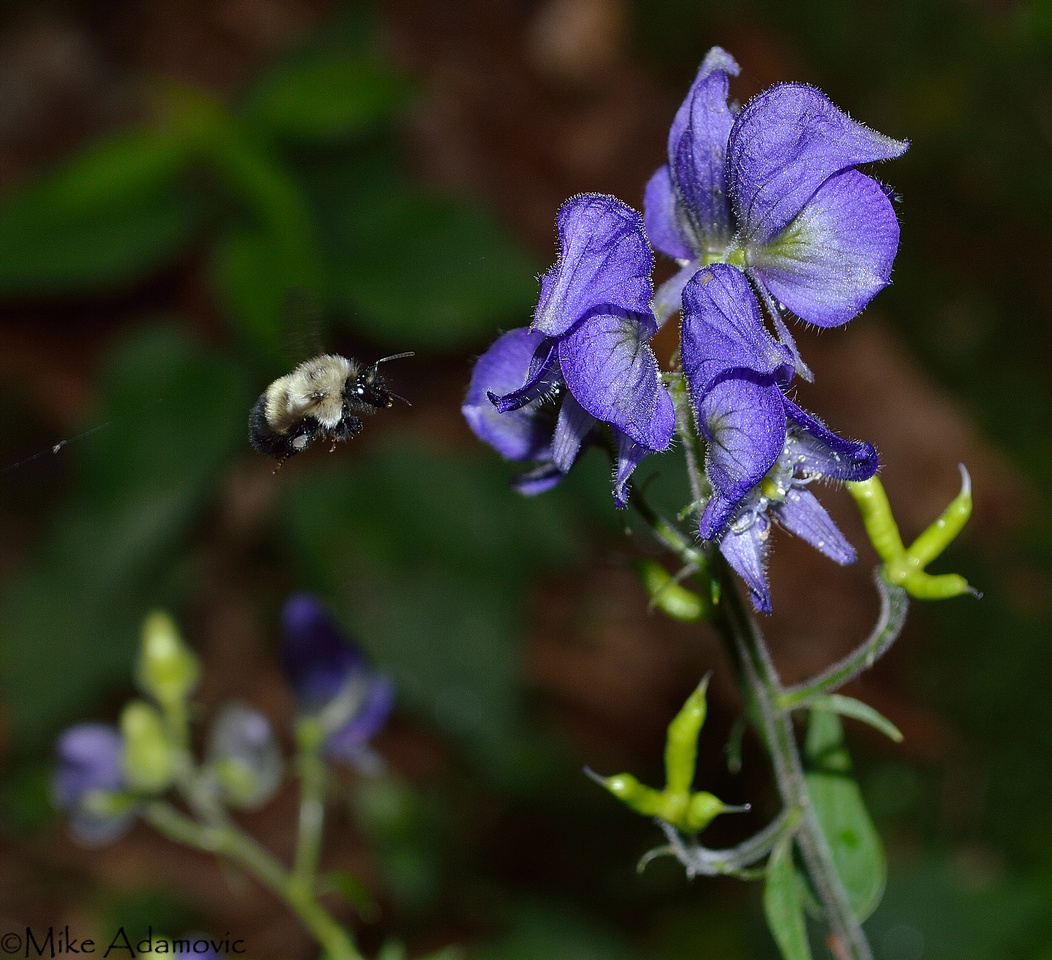Northern Monkshood—A Rare, Deadly Beauty


Various species of monkshood can be found vegetating in residential gardens, valued for their uncommon beauty. Their slender form, interesting flower morphology, and bountiful raceme of purplish-blue flowers, make this genus among the most spectacular of North American wildflowers. One species, however, which cannot be bought and planted—owing to its federally-threatened status—is northern monkshood (Aconitum noveboracense), most of the Northeast's only native species. Three widely disjunct populations exist. Two are located in the Mid-West (in Iowa and Wisconsin and another grouping in northeastern Ohio), while our Northeastern individuals are confined to the Catskill Mountains of New York. Few are those who have ever seen this species alive in the wild, especially in our region. Only a handful of documented sites exist and are either on private property or are in areas so rugged and remote that only experienced bushwhackers can access. Hopefully more populations are yet to be discovered.
Northern monkshood is a glacial relict, a plant whose range has dramatically declined since the end of the last ice age. This species is now restricted to isolated pockets mimicking the cool, damp conditions that were once ubiquitous during, and shortly following, glaciation. The species grows on damp cliffs, among shaded seepage springs and talus slopes, and along wooded wooded streamsides rich in mosses, ferns, and other shade tolerant plants. All sites have either year-round cool air- or water-flow and routinely both. Plants can grow in areas with very little soil and, like red columbine, are adept at colonizing rock crevices. Sometimes along streams plants sprout from rock ledges only inches from the waterline. Such precarious placement has been to the detriment of the species in recent years, as larger and more frequent storms have caused severe flooding which has scoured this rarity away. Increased deer browse from unchecked herds has also been leading to significant declines.


While unlikely to be encountered by chance, this species is unmistakable when in bloom and can easily be seen on an opposite bank of a stream or brook even amid the darkened environs of a dense northern hardwood forest, its typical haunts. The flowers resemble the bowed heads of pious monks enrobed in medieval-style hoods, and stud the erect flower stalks that can rise to a height of four feet. But what really catches the eye is the color. Its enchanting amethyst or royal purple hues radiate from the monochromatic forest like glowing nuclear fuel rods or the faint, yet distinct ghostly displays of fungal foxfire. It's certainly one plant that's not easily overlooked.
It's important to note that like a radioactive element or specter, it's best to keep your distance. Despite monkshood's charming physical attributes, it conceals qualities which aren't so attractive or as innocent as this species' common name suggests. All parts of the plant contain extremely potent toxins, which grievously affect the heart and nervous system. Ingesting even minute amounts can prove fatal within hours; absorption of the toxins via the skin can be equally problematic. Northern monkshood's European cousin, Aconitum napellus, has been used for millennia by a diverse audience, from trained assassins to farmers trying to rid themselves of troublesome animals like wolves—hence its other name, wolfsbane. While the toxins are most concentrated in the roots, there have been reports of sensitive individuals being affected by merely taking a whiff of the alluring, siren-like blossoms.
Studies comparing the genetic make-up of northern monkshood to Columbian monkshood, a species native to the western U.S, have shown little genetic variation. As a result, some botanists lump the two species together. One thing is for certain, the Catskill population has likely been isolated for many thousands of years and deserves protection. A recovery plan devised by the Fish and Wildlife Service in 1983 states: "Like the search for a rare bird, the search for northern monkshood is the pursuit of a special quarry for many outdoor enthusiasts and nature photographers. These people are enriched by its very presence as a rare, wild thing."










Comments
Jeff
http://www.printradiant.com | http://www.printlinkage.com | http://www.hitsticker.com | http://www.stickermac.com